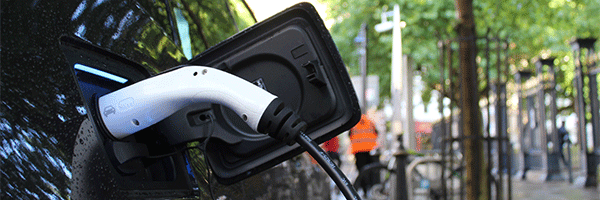Mid Term

August 21, 2023 | Daily JAM, Mid Term, Morning Briefing, Special Reports |
As cities like Phoenix bake–the city has recorded a record 19 straight days of temperatures above 110 as of July 18–and as 58 million people in the United States are forced to face 3-digit temperatures this week, and as researchers in Europe estimate that the 2023 death toll from extreme heat is likely to surpass the 2022 record to 61,000 (up from 40,000 in 2018 and 2019), you’d think it’s impossible to underestimate the climate disaster now facing us. But it is. The stories about extreme heat (and the deaths from it) and about deaths in flash floods (because hotter air can carry a larger load of water) and in the first recorded tropical storm to hit Los Angeles and about the likelihood that polar bears face extinction focus on what I’d call primary effects of global climate change. But the secondary and tertiary effects of climate change look to be even bigger, more far-reaching, and to have a bigger impact on the daily lives of billions of human beings.The terrifying truth is that our civilization is a lot more vulnerable than we realize because of these secondary effects. The crisis in the Florida citrus industry is a good, if very depressing, example of the power of these secondary (and beyond) effects.

August 19, 2023 | Daily JAM, Mid Term |
The Treasury will auction a literal truckload of debt this week. And that’s making the bond market nervous. We’ve already had major volatility that wiped out this year’s 4% gain in Treasury bonds. The worry is focused on the long end of the yield curve where demand for 20- and 30-year Treasuries has been light. The Bloomberg index of Treasuries maturing in 10 years and more has slumped 5.7% so far in August.

August 11, 2023 | Daily JAM, Mid Term |
Credit card balances hit $1.03 trillion in the second quarter, up 4.6% from $986 billion in the preceding quarter, according to the Federal Reserve Bank of New York.

July 6, 2023 | COP, Daily JAM, Dividend Income, Mid Term, PXD |
On Wednesday, July 5, Exxon Mobil (XOM) told investors that second quarter earnings could drop by 50% from earnings in the second quarter of 2022. On Thursday, July 6, shares of Exxon Mobil closed down 3.73%. Remember, we’re talking about Exxon Mobil here, one gigantic oil company. So while earnings could fall by half in the quarter, the company is still looking at quarterly earnings of $6.2 billion. Exxon’s news has implications across the energy sector.

June 23, 2023 | ALB, Daily JAM, LAC, Mid Term, Millennial, PILBF, Top 50 Stocks |
Spot lithium carbonate prices (for battery-grade lithium) in China are up 92% from a 19-month low in April. So now what?

June 22, 2023 | Daily JAM, FQVLF, Mid Term |
This week’s Quick Pick is First Quantum Minerals (FQVL). I’ve talked about copper as an equity kicker in gold mining stocks in a previous video. Barrick, a huge gold producer, is also a significant copper producer and is looking to expand its copper production. The company is currently in “informal talks” with First Quantum Minerals. Year to date, First Quantum Minerals is up 21% and 34% in the last three months, so it definitely shows good short-term momentum. In the long term, copper demand will see tremendous growth in the global climate change economy, including in electric vehicle production. The other benefit here is copper and, of course, gold is a good hedge against inflation which I predict will continue higher than the Federal Reserve and consumers would like for quite some time. Put copper, with its growth potential, together with gold, with its role as an inflation hedge, in one mining stock and you’re starting to look at something good.

June 15, 2023 | Daily JAM, Mid Term |
So how big a difference has market cap weighting made? Remember the market cap weighted S&P 500 is up 14.77% in 2023 as of June 14. And up 12.02% for the last three months. The equal-weighted S&P 500, on the other hand, is up just 4.77% for 2023 as of June 14 and ahead 5.18% for the last three months. To understand what “weighted” and “unweighted” mean read the post

June 6, 2023 | Daily JAM, Mid Term, Morning Briefing |
Today, Tuesday, the World Bank said on Tuesday that the global economy would slow this year and next as rising interest rates take a global toll. In its latest Global Economic Prospects report the World Bank projected that global growth would slow to 2.1% this year from 3.1% in 2022. That is slightly stronger than its forecast of 1.7% in January. But that good news is tempered by a forecast that calls for growth at a slower 2.4% rate instead of the bank’s January prediction of 2.7% growth.

May 30, 2023 | Daily JAM, Mid Term |
This week’s Trend of the Week video is COVID is Hitting China Again. China is seeing another wave of COVID. We can expect this wave to peak at the end of June with around 65 million cases a week. While that’s a huge number, the previous wave saw 35 million cases a day. So, yes, this is a smaller wave, but it certainly won’t help China’s economy, which is struggling to get back to a 5% growth rate. The country is also dealing with a youth unemployment crisis where the recent graduate unemployment rate is around 25%. This wave of COVID isn’t likely to shut down the entire country–if only because China’s leadership isn’t about to go back to the prior policy of widespread closures of factories and entire neighborhoods–but it is likely that some people will be less inclined go out, mandate or not, and they may self-impose their own lockdown until the wave subsides. This is all likely to take a bite out of the growth rate which was edging back toward 5%. As stocks stagnate and a recovery rally in China looks to be coming to an early end, I’ll be posting about shorting China ETFs on my paid site, JubakAM.com.

May 24, 2023 | Daily JAM, Mid Term |
We all know that a continued standoff on the debt ceiling would be bad for the U.S. economy and financial markets. But even a deal along current lines is going to cost jobs–lots of jobs–and take a bite out of economic growth, according to Bloomberg Economics Spending cuts expected in an eventual deal to raise the U.S. debt limit could cost the country as many as 570,000 jobs and make the recession projected by Bloomberg Economics even worse.

May 23, 2023 | Daily JAM, Mid Term |
Today, May 23, finally saw some fear in stock prices. The Standard & Poor’s 500 closed down 1.03% on the day. The Dow Jones Industrial Average ended down 0.59%. The NASDAQ Composite was down 1.17% and the NASDAQ 100 dropped 1.21%. The small-cap Russell 2000 was off just 0.21%. That’s a remarkably small drop considering the S&P 500 was up 9.97% for 2023 as of the close yesterday. And the NASDAQ Composite was ahead 22.01% for the year as of the May 22 close. Looking at this market, what cries out for explanation isn’t why stocks slide today but why they have remained so strong in the signs of a slowing economy and a continued debt ceiling crisis that could, potentially, result in a default by the United States.

May 16, 2023 | Daily JAM, Mid Term |
U.S. retail sales increased in April by 0.4% from March levels. Retail sales figures for March were revised upwards to show a 0.7% decrease. Economists surveyed by Dow Jones had expected a 0.8% increase for the month. (I would note that retail sales numbers are not adjusted for inflation, so real, that is, inflation-adjusted, retail sales for April were essentially flat since the all-items Consumer Price Index rose 0.4% in April.) Still, the increase in nominal retail sales was the first in three months after the 0.7% drop in March and February. Today’s report does re-enforce one troubling trend in consumer spending.















